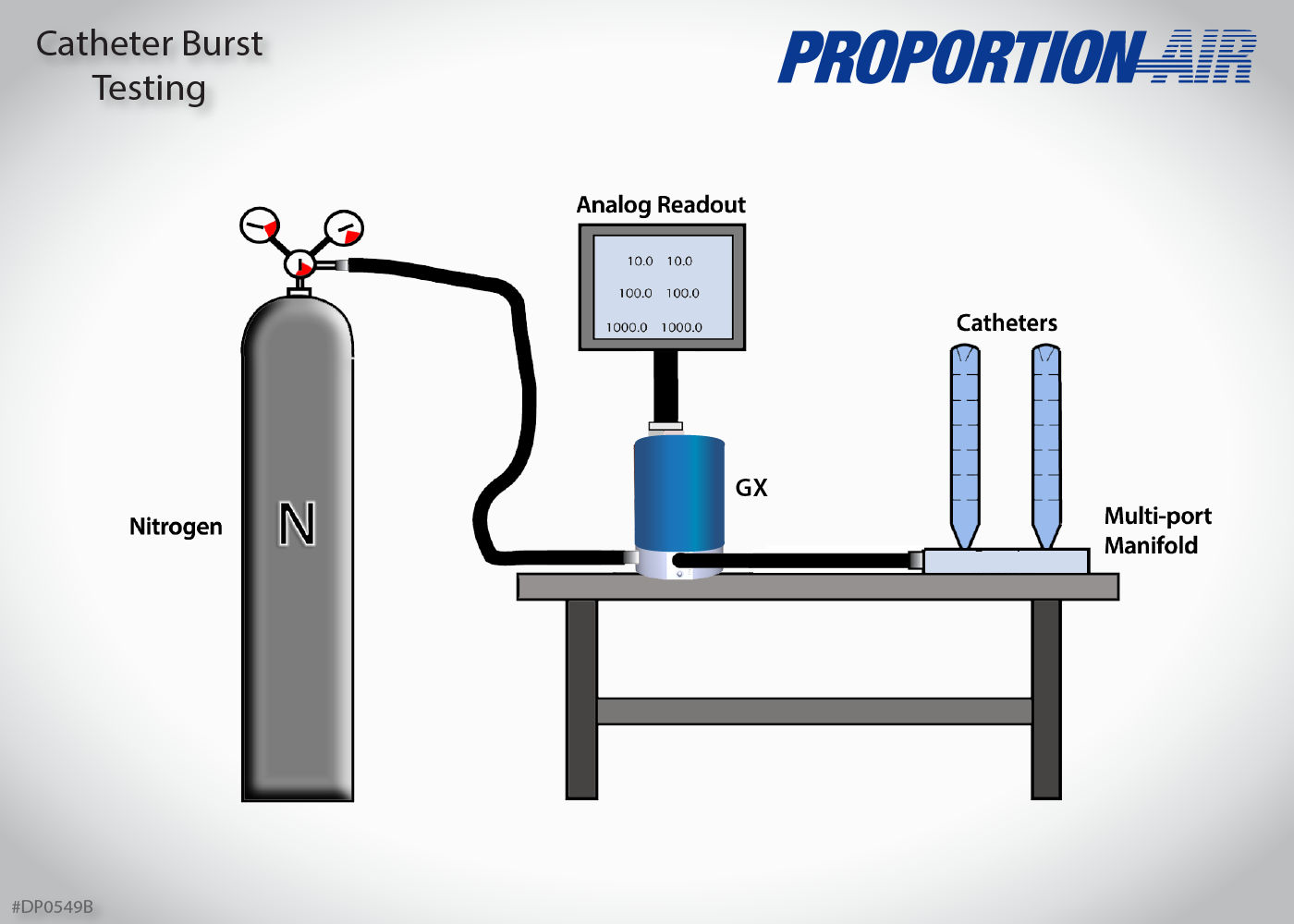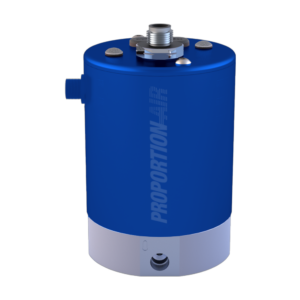
High Pressure Catheter Burst Testing
In this sketch, a GX-Series high pressure electronic pressure regulating valve is being used to control the pressure for a catheter burst testing application. Test results are being provided to the controller via the GX analog monitor feedback signal. The analog monitor output signal can be used to capture the pressure when the catheter bursts. The GX1 is a closed-loop device and can be calibrated to control to pressures as high as 1,000 PSI.
It is critical that catheter balloons work as intended, since they are often used in life-saving medical applications. Proper testing must occur to ensure that failure is not an option. A variety of high pressure testing occurs during the manufacturing and validating stages. Many pressure cycles with specific sequences are run, with inflation and deflation rates closely monitored.
Also known as the “step test,” the typical catheter burst testing process starts at an initial pressure and is then stepped (periodically) over time. This test ends when the sample bursts and the data is recorded, then analyzed.

